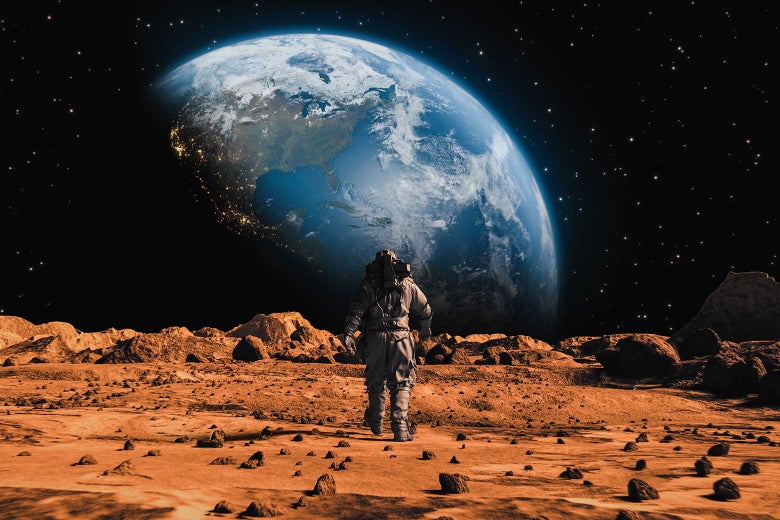
Why the US Can’t Send Humans to Mars?
Since the Apollo program landed humans on the Moon in 1969, NASA and private space companies have poured time, money, and resources into crewed Mars missions. But most have failed to get off the ground. It’s easy to blame technology, but there are other factors at play. This article will cover the many reasons why the US can’t send humans to Mars.
Cost In Case of Mars
There’s no doubt that sending humans to Mars is a massive undertaking. While robotic probes have explored Mars in incredible detail, only humans can take advantage of the opportunity to explore the planet’s environment and learn whether it could have ever supported life. And that extra level of exploration doesn’t come cheap.
In order to reach the 2030s goal of a human Mars mission, NASA needs to continue to make massive investments in a variety of technologies. These include the reusable rocket system, the Space Launch System, and the Orion capsule that will carry astronauts on the trip. Combined, these projects cost more than $100 billion in today’s dollars, which is a huge sum of money. And it’s money that has to be weighed against the demands on the federal budget, including things like health care, education, poverty reduction and military reinforcement.
As it stands, support for a Mars mission is relatively high across party lines. But it’s a risky and expensive undertaking that requires consistent funding in the face of political priorities, partisan fighting and the possibility that politicians won’t be around by the time the benefits are realized. There are better ways to invest that kind of money. For example, investing in a lunar settlement would extend humanity’s footprint beyond Earth and teach us how to utilize space-based resources.
Distance
The trip to Mars isn’t just long, it’s also dangerous. Astronauts will have to travel millions of miles without the protection of the Earth’s magnetic field. This will leave them exposed to high levels of radiation and the sun’s harmful rays. They’ll also face challenges on Mars itself, as it lacks a thick atmosphere like our own planet.
The astronauts will need to bring enough supplies for the entire trip, including food, water, and oxygen. But if they carry too much, the weight will slow down their spacecraft. Moreover, the longer they stay on Mars, the more resources they’ll need to resupply themselves from Earth. This will be difficult, as the distance between Mars and Earth is about 140 million miles.
This will make communications between the two planets more challenging as well. The delay between a call from an astronaut on Mars and someone on Earth could be up to 24 minutes, which is significantly longer than the few seconds that we’re used to with video conferencing today.
Despite these difficulties, humans have been planning manned missions to Mars since the 1950s. But many of these plans have been thwarted by a lack of funding and technology. And despite the fact that most major spacefaring nations agree on the goal of sending people to Mars, it will take a massive international effort to accomplish such a mission.
Technology
The human body simply can’t handle long-term space travel. It wreaks havoc on DNA, alters the microbiome and suppresses the immune system, damages bones and muscle tissue, changes circadian rhythms, and shifts fluids toward the head, which can be pathological for the brain over the long haul.
A crew traveling to Mars would be isolated in a transit vehicle for years at a time. That’s a very different experience than astronauts have experienced in the past. It could also be dangerous.
Engineers need to develop a habitat that can protect people from radiation and dust storms, as well as grow food and water to sustain them during the trip. A constant power source is imperative, too. Astronauts can’t rely on solar panels because Mars is much farther away from the sun than Earth. Nuclear power would be the best option, but that requires testing and developing technology that’s safe for such a mission. To reach Mars, engineers must design and build a spacecraft that can survive an eight-month trip and then safely land on a planet with an entirely different gravity from the one they left behind. That’s a lot to ask for.
In addition, the US must work with other nations and private companies to get there, as NASA can’t afford to fly people using its rockets alone. The agency currently pays the Russian government for flights aboard the Soyuz rocket and has yet to develop its replacement, which will be expensive and take a long time to test.
Time
Unlike Star Trek’s warp-speed journeys, interplanetary travel is a long ride. It takes probes a few months to get to Mars, but a human mission would be much longer. In addition to being a time-consuming process, the trip would require tremendous amounts of energy. The best way to ensure that astronauts don’t overexert themselves is to carefully design the spacecraft that will carry them. This will also help them stay healthy and fit throughout the voyage.
Astronauts will need to be able to live in small, isolated spaces for long periods, which can lead to mental and physical health problems. One of the most serious is the loss of a normal day and night cycle, which can cause insomnia, irritability, and even depression. Moreover, it can impact the body’s ability to absorb oxygen. Furthermore, the explorers will have to deal with increased radiation levels on Mars. While shielding can protect them from the particles that are given off by the Sun, it is more difficult to counteract cosmic rays.
Similarly, there will be challenges with regulating the rights of children on Mars. As the world is currently divided into several different legal systems, establishing a common system that can govern the rights of children on Mars could be challenging. Moreover, these laws will need to be tested and refined before they can be applied to a colony.








